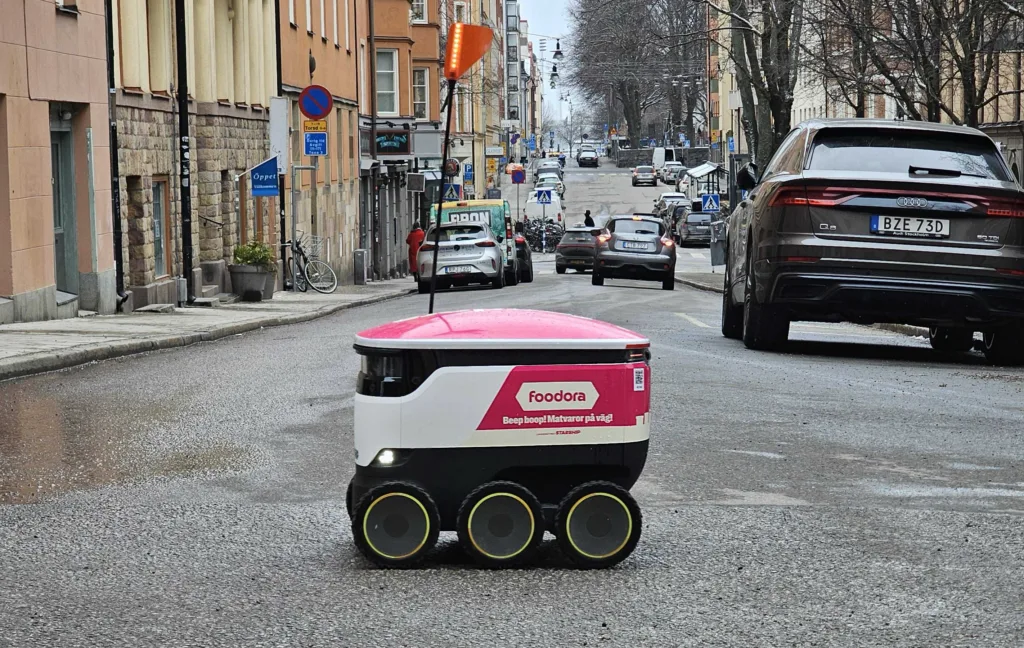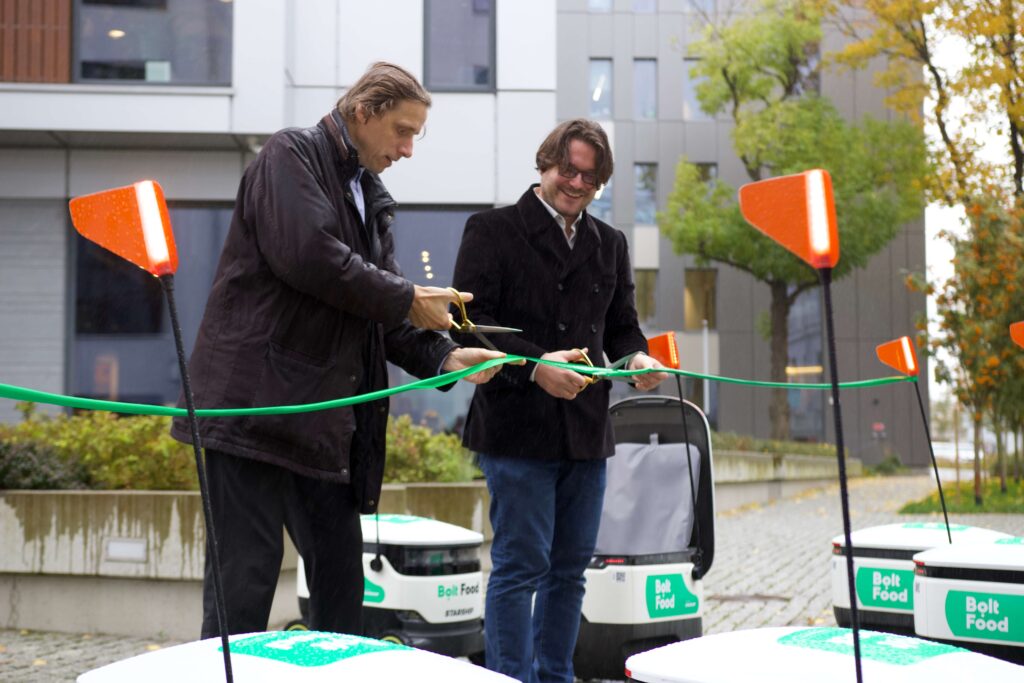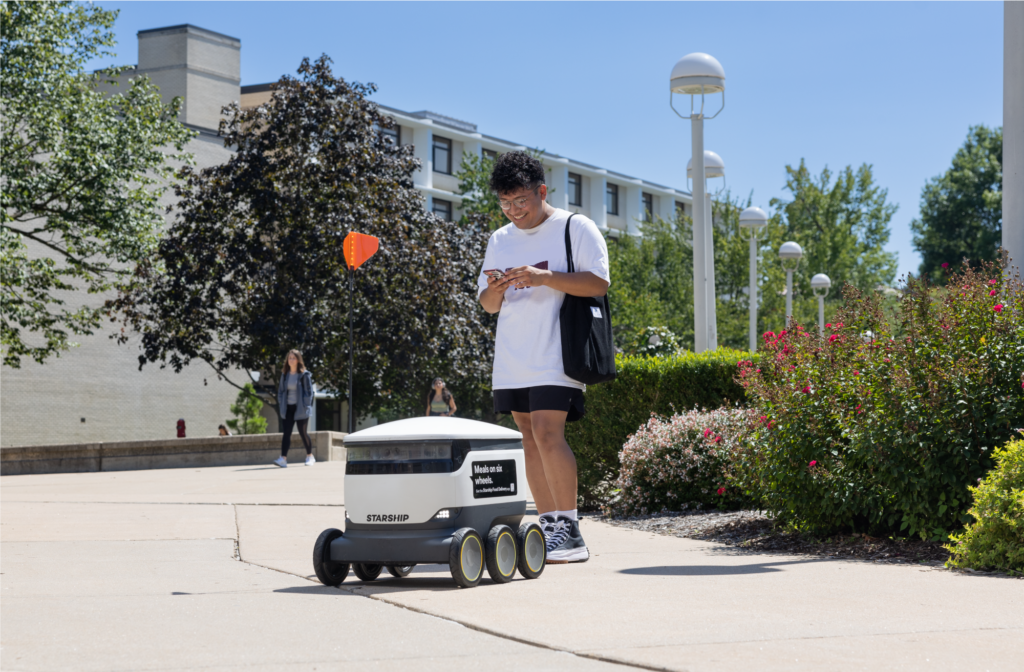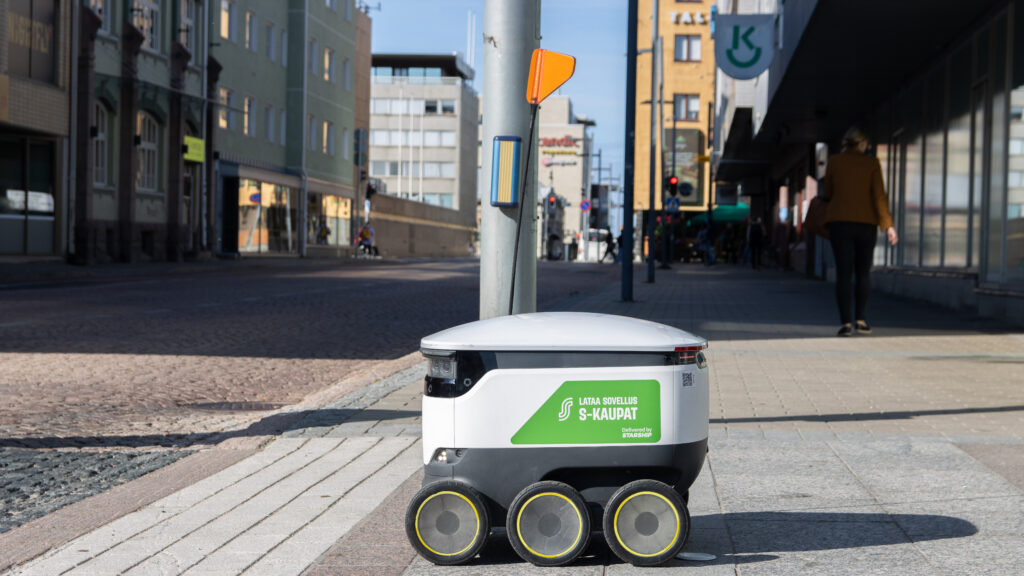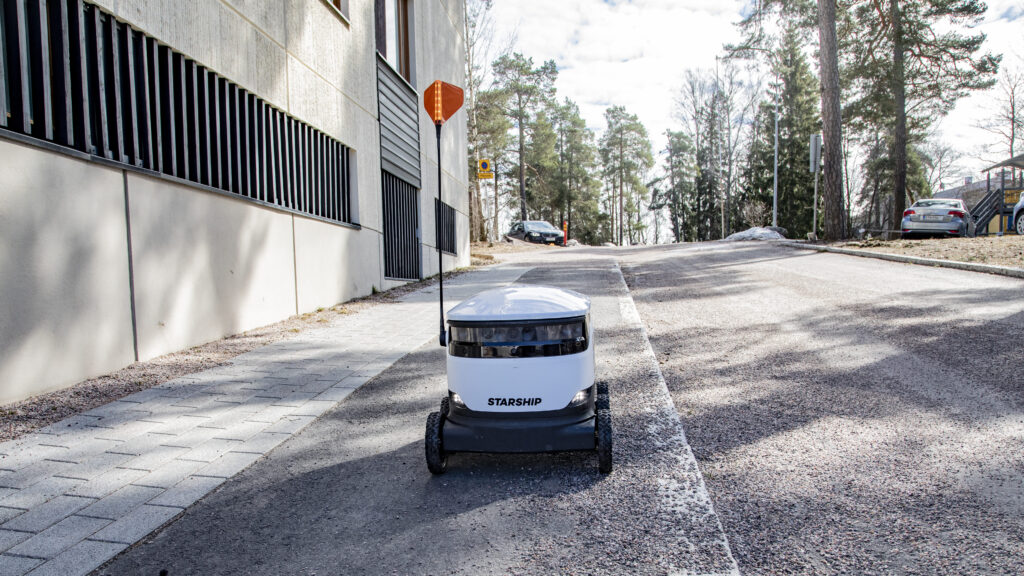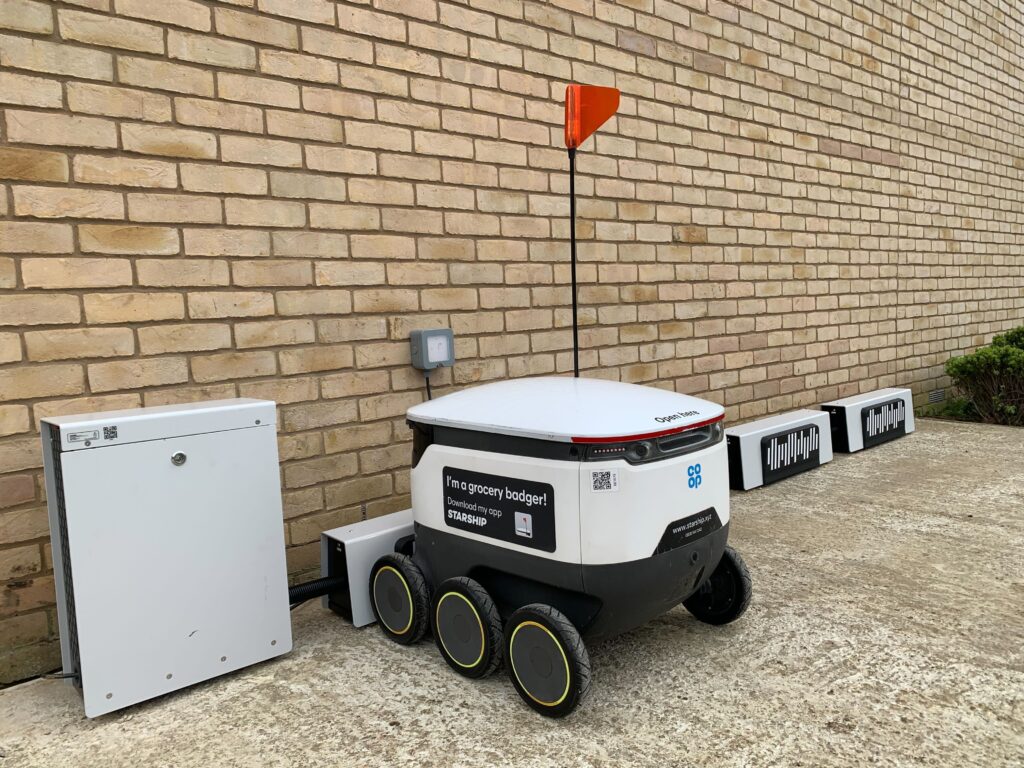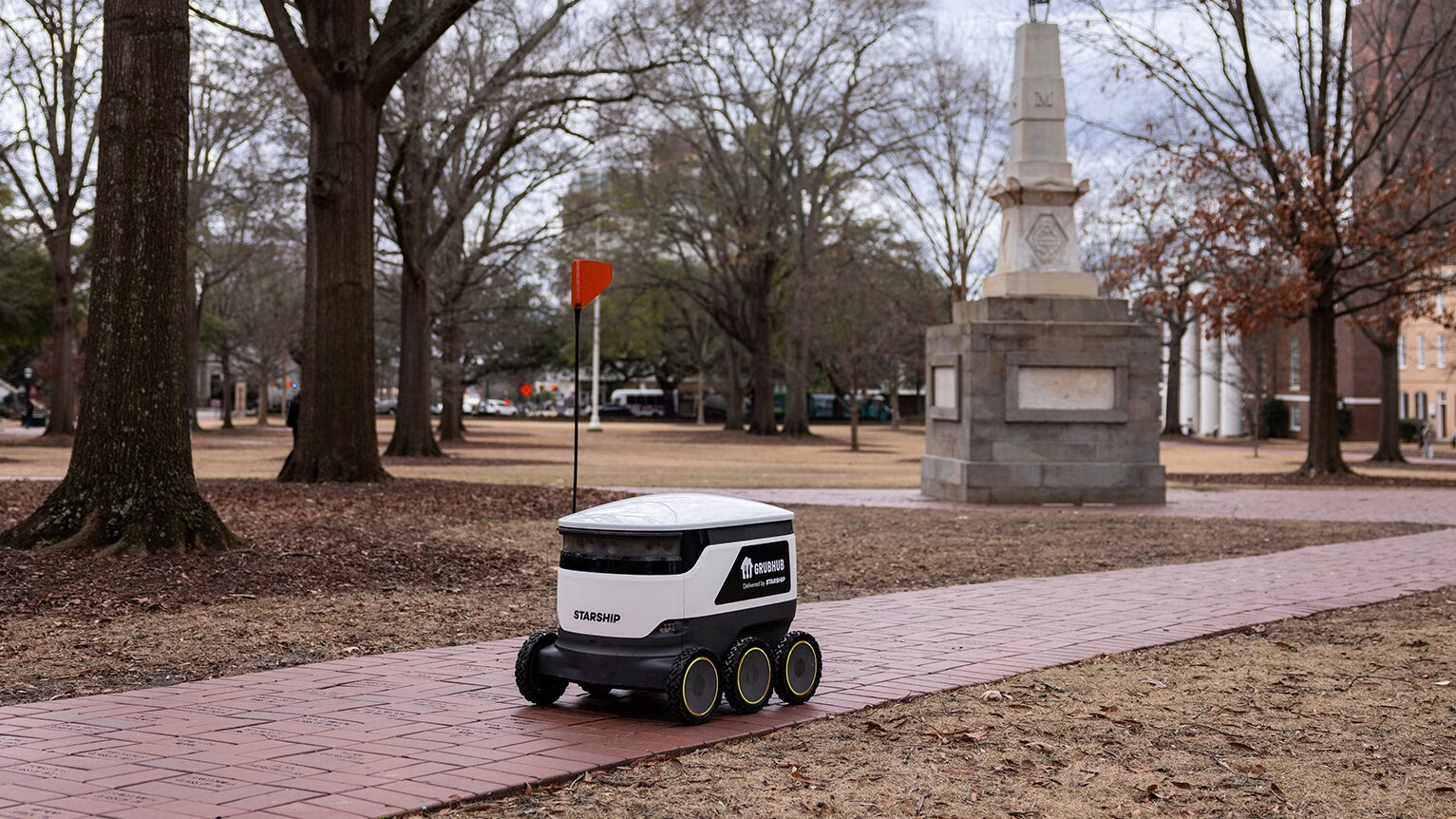
The University of Akron rolled out a robot food delivery service today. The robots will deliver to campus building and residence halls.
The robots are compliments of a partnership between Starship Technologies, creator of the robots, Aramark, and The University of Akron.
Starship’s fleet of autonomous, on-demand robots will deliver from several campus eateries including: Starbucks, Qdoba, Panda Express, Auntie Anne’s and Freshens. Students, faculty and staff can now use the Starship app to order food and drinks from local retailers to be delivered for a fee. The service works in conjunction with the student meal plan, or individuals can pay by credit card on the app.
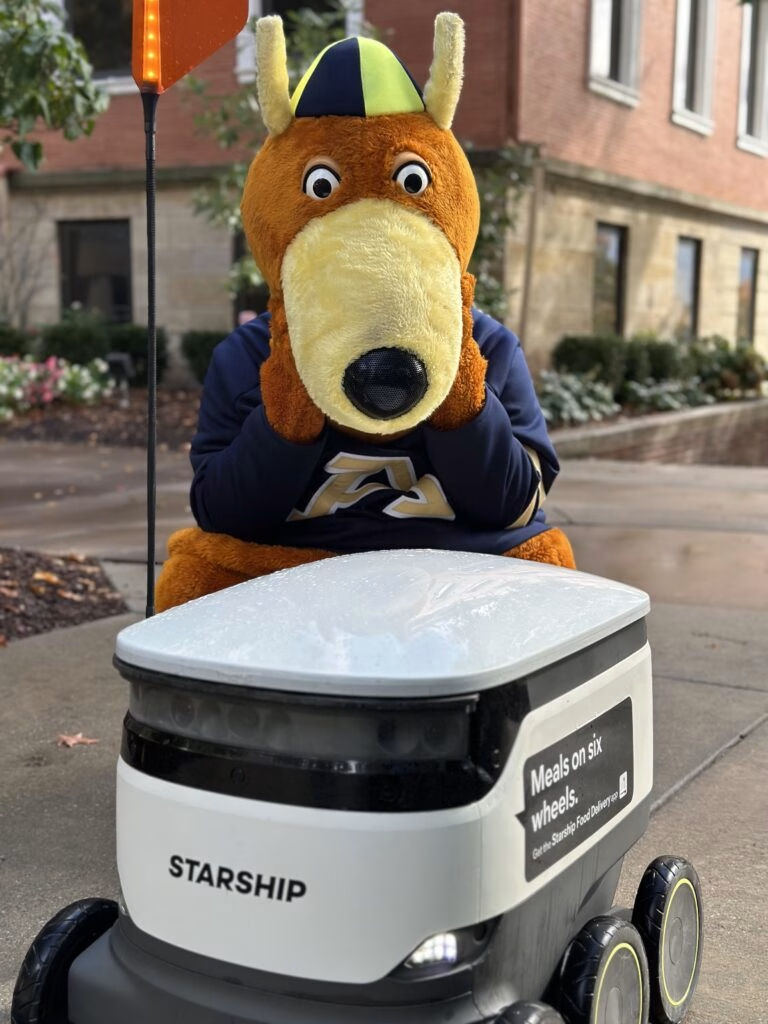
Starship is already providing services to campuses across the country, including Purdue University, James Madison University, University of Mississippi and Arizona State University, among others. Since launch, all campuses have increased the number of robots to meet the demand.
To get started, users open the Starship Deliveries app, choose from a range of their favorite food or drink items, then drop a pin where they want their delivery to be sent. They can then watch as the robot makes its journey to them, via an interactive map. Once the robot arrives, they receive an alert, and can then meet and unlock it through the app. The delivery usually takes just a matter of minutes, depending on the menu items ordered and the distance the robot must travel. Each robot can carry the equivalent of about three shopping bags of goods.
“We’re happy to add another great university in Ohio,” said Chris Neider, vice president of business development at Starship Technologies. “The Zips have a very strong STEM program, and we think the campus community will enjoy being able to use this autonomous technology on a daily basis.”
Starship Technologies operates commercially daily around the world. Its zero-emission robots have made more than 5 million autonomous deliveries, traveled millions of miles and made more than 150,000 road crossings every day. The robots use a combination of sophisticated machine learning, artificial intelligence and sensors to travel on sidewalks and navigate around obstacles. The computer vision-based navigation helps the robots to map their environment to the nearest inch. The robots can cross streets, climb curbs, travel at night, and operate in both rain and snow. A team of humans can also monitor their progress remotely and can take control at a moment’s notice.
